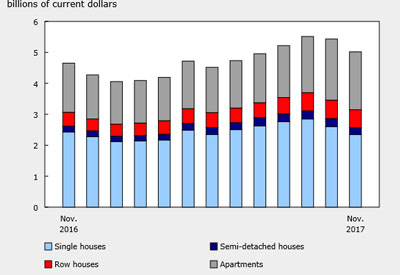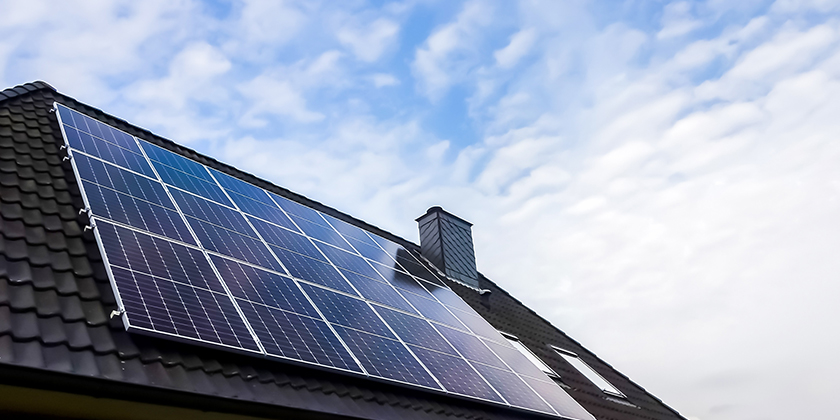Electric Heat: The Cleanest Form of Home Heating

March 22 2016
Discover the “five shades of green” for electric heat systems. There has never been a better time for your customers to make the switch.
Comfort. Safety. Reliability. These three words evoke a strong sense of personal well-being. From the cars and homes we purchase to the consumable products that we use in our everyday lives — comfort, safety and reliability are key to enhancing our lives.
You would then also expect these to be key considerations when installing upgrades in a home or small business. For instance, when installing a heating system in a new home or replacing one in an existing home, how important is comfort, safety and reliability for your chosen heat source? As well, with rising energy costs and the need to be more energy-conscious, there has never been a better time to make the switch to a more efficient heating source.
Electric resistance heat is an ideal solution for your customers’ everyday heating needs. Electric heat provides a number of advantages over other sources.
Let’s take a closer look…
What is electric resistance heat?
Electric resistance heat is a safe solution that converts 100% of incoming electric energy into heat, providing direct warmth and comfort to active living spaces (zoned spaces). A zoned heating system allows homeowners to control the temperature of each room, or zone individual rooms, thereby maximizing overall comfort and minimizing energy costs. Zoned heating is achieved through convection heaters such as baseboards, convector heaters, fan-forced heaters or zoned radiant heaters — all of which can be easily installed in any residential, commercial and industrial application. [1]
Why choose electric heat?
A popular choice. Electric heat systems are growing in popularity for its ease of use, comfort and energy efficiency. According to Statistics Canada, nearly 40% of Canadian homes are heated with electricity, with the vast majority of consumers choosing electric baseboards as their system [2]. Electric heating is reported to be most commonly used by households in Quebec (85%), Newfoundland and Labrador (71%), and New Brunswick (66%).
Incidentally, households in Quebec and New Brunswick had the lowest average energy consumption, according to the same study. While electric heat may be more prevalent in those regions, likely because of lower electricity costs, many other provinces are moving towards greener energy generation alternatives, such as hydro and renewable sources (wind, solar). As electricity generation through these alternative sources continues to increase, making the switch to heating homes with electricity is a good environmental choice.
Affordable. One of the most common misconceptions about electric heat is its high cost. The initial purchase, installation, maintenance and operating costs are typically much less than other heating systems. While operating costs can vary on a provincial basis as a result of electricity cost variations [3], the overall cost to operate an electric heat source is lower because of very minimal maintenance costs and the advantages of zone heating. Just think about the costs that you might pay today for a central heat source that warms all parts of your house — even those rooms that you don’t commonly use! Further savings can be achieved with a programmable or non-programmable electronic thermostat, which allows you to adjust temperatures during the times when you need it most.
Efficient. Simply stated, electric heat systems are considered to be 100% efficient; all of the energy consumed by the heaters is converted into heat and isn’t lost through chimneys or other types of conducts. Remember, because you are only heating the rooms that you most commonly use, there is no excess – you only use what you need.
The efficiency and cost savings can be quite significant. Further to this, when combined with a programmable or non-programmable electronic thermostat, electric heaters can continuously operate at a lower level, which is more efficient than the peaks and valleys experienced with full-on/ full-off modes of most heating solutions. A growing number of consumers have even opted to supplement their central heat system with electric heat sources. This paired combination allows users to lower their central heating (and costs!) during the winter months by using electric resistance heat systems to warm active living spaces — and still have the flexibility to cool their homes with central air conditioning during the summer months.
Clean and safe. If you have a fuel-burning system such as natural gas, oil, propane and wood, you are likely familiar with the odours associated with combustion. With electric heat systems, there is no combustion, resulting in no unpleasant odours and no expulsion of dangerous combustion gases (e.g., carbon monoxide).
Furthermore, electric heat equipment and heating elements sold in Canada are required to meet strict operating and installation standards for electrical safety. Before purchasing your heating system, ensure that it has CSA, ULC or other approved certification marks. Also, all electric systems must be installed by a certified electrician.
Flexible. Electric resistance heat systems are more sophisticated than ever before – they can now be configured with programmable and non-programmable electronic thermostats, allowing homeowners to control the temperature in each room and enjoy optimal levels of comfort and energy cost savings. Programmable thermostats can be configured with smart devices, allowing users to conveniently adjust temperature settings from wherever they are. Non-programmable thermostats for electric heat systems are also a popular choice among consumers as they provide ease-of-use functionality, ease-of-installation, and some models are compatible with smart devices. The option is yours — both types of thermostats are ideal options and should be considered to support electric heat systems.
Environmental. There has never been a better time to go green. The electricity system in Canada is shifting towards clean energy; utility companies are moving towards retrofitting their generation stations to support alternative energy sources. Electric heat systems have also adapted to become fully compatible with electricity derived from nuclear energy and renewable sources like wind and solar energy.
As shown in Figure 1, hydro is used to generate 63% of electricity in Canada, while nuclear energy is at 15%. With Canada taking steps towards eliminating the use of coal for electricity generation, the use of renewable energy sources, such as solar and wind, will likely find a more prominent place in Canada’s electricity generation landscape.

Electric heat systems offer an environmentally friendly heat source. As Canada continues to make important strides in generating electricity through the increased use of renewables and nuclear energy, electric heat systems have adapted to become fully compatible with electricity derived from nuclear energy and renewable sources like wind and solar energy. Electric batteries will also be a source for fuelling electric heat sources in the coming years.
Reliable. Electric heat systems are very reliable as they have virtually no moving parts; they require relatively little maintenance and tend to last for a long time without requiring replacement. For instance, baseboard and convector heaters have proven to typically last an average of 25 years [4].
Advanced design options. Electric systems offer a variety of styles and colours to match the décor of any room. Homeowners can choose from a wide selection of baseboard and convector designs that best suit their needs. Even floor heating systems are completely hidden from view, providing complete flexibility in designing a space. With all of the upgrades homeowners might do to a living space (paint, lighting, flooring), why not make the heat source warm and inviting?
What’s next for you?
The following are some of the most commonly asked questions that you might reflect on to better understand if electric heat is right for your customers:
1. Is the living/working space ideal for an electric heat system?
Any electric heat system can be used in any room of a home or in any environment. These systems work best in enclosed spaces, such as in bedrooms, living rooms, basements or in new room additions, as these spaces often re- quire direct and/or supplemental heating. Electric heat systems come in a variety of types and sizes and are best suited for particular rooms. For instance, in-floor heat systems are ideal for bathrooms, where electric baseboards or convector heaters are more commonly used in bedrooms or living rooms.
Before having a heating system sized, consider properly insulating and draft-proofing the rooms in the home. A thorough caulking, weather-stripping and insulation job can help add extra comfort and cost savings to the electric heat system. Nevertheless, it is recommended that you conduct a heat loss calculation for the room in order to choose the correct wattage. Calculation tools can be found online.
2. What cost savings can I expect with an electric heat system?
Zone heating can provide more than 20% in energy savings compared to heating both occupied and unoccupied areas of your house. [6] While cost savings vary from province to province because of variances in electricity costs, some utility companies offer special incentives and programs to help you save. Contact your local utility to learn about the programs and incentives in your area.
3. Why should homeowners choose an electronic thermostat for their electric heat system?
Electronic thermostats, whether programmable or non- programmable, surpass standard thermostats in terms of efficiency. Electronic thermostats have a pulse-based electronic controller that provides a continuous temperature reading at very close intervals (about 15 seconds). The resulting temperature stability provides comfort and energy savings.
In fact, according to Natural Resources Canada, efficient thermostats can reduce the energy consumption of electric baseboards by 4.5% to 12% a year. This represents a saving of about $100 for the cost of heating an average home, according to Hydro-Québec.
Make the switch today!
Electric resistance heat continues to be a popular choice with consumers for good reason. Simply put: it is affordable, efficient, safe, clean and comfortable. Also, with increasingly sophisticated design options and compatibility with programmable thermostats and smart devices, homeowners can experience new levels of flexibility in temperature control.
Advancements in electricity generation have paved the way for electric heat systems to be more versatile than ever before; the systems can connect with a wide range of energy sources, renewable sources such as solar and wind.
As with electric cars and home batteries, electric resistance heat is fast becoming the new way of gaining maxi- mum comfort and efficiency for homeowners’ heating needs. There has never been a better time to reconsider traditional heat sources and move towards re-evaluating the overall efficiency and effectiveness of your customers’ current heat system.
In review: electric heat systems offer “five shades of green”
1. Efficiency. Electric heat solutions are 100% energy efficient — all of the energy taken in by the heater is converted into heat.
2. Environmental. Electric heat systems use electricity to operate — there is no need for natural gas or fossil fuels. With the electrical system shifting to support carbon-free and alternative energy sources (solar, wind, hydro), Canadians now have more choices than ever to reduce their carbon footprint.
3. Affordable. Electric heat systems use zone heating, which means users only heat the space they need when it is being used. Zone heating can produce energy savings of more than 20% compared to heating both occupied and unoccupied areas of the home.
4. Clean, safe and carbon free. The solutions produce zero combustion products in the home so they are completely safe. This means, no carbon monoxide, odours, fumes, smoke, exhaust or noise.
5. Flexible and reliable. The products can be easily configured with programmable and non-programmable electronic thermostats, allowing users to control the temperature in each room for every hour of every day. The electric heat systems also have robust design and the heating elements that typically have a lifespan of over 25 years.
Endnotes
1. For details on the wide range of electric resistance heaters available, go to www.electrofed.com/types-of-electric-resistance-heaters.
2. www.statcan.gc.ca/pub/11-526-s/2013002/t002-eng.htm
3. The average price for electricity in Canada is 12.15 cents/kWh (Source: Hydro Quebec, Comparison of Electricity Prices in Major North American Cities, 1998 – 2014, Retrieved June 16, 2015).
4. Compared to the typical lifespan of a gas unit, which is approximately 10-15 years — about half of an electric heat system. Source: www.consumeraffairs.com/news/replacing-your-homes-heat-pump-031513.html.
This article was developed by Electro-Federation Canada’s Electric Heat Section, which comprises the following Canadian manufacturer members:
• Convectair — NMT Inc.
• Dimplex North America Limited
• EasyHeat
• FlexTherm Inc.
• Ouellet Canada Inc.
• Stelpro Design Inc.
• Thermon Canada Inc.















